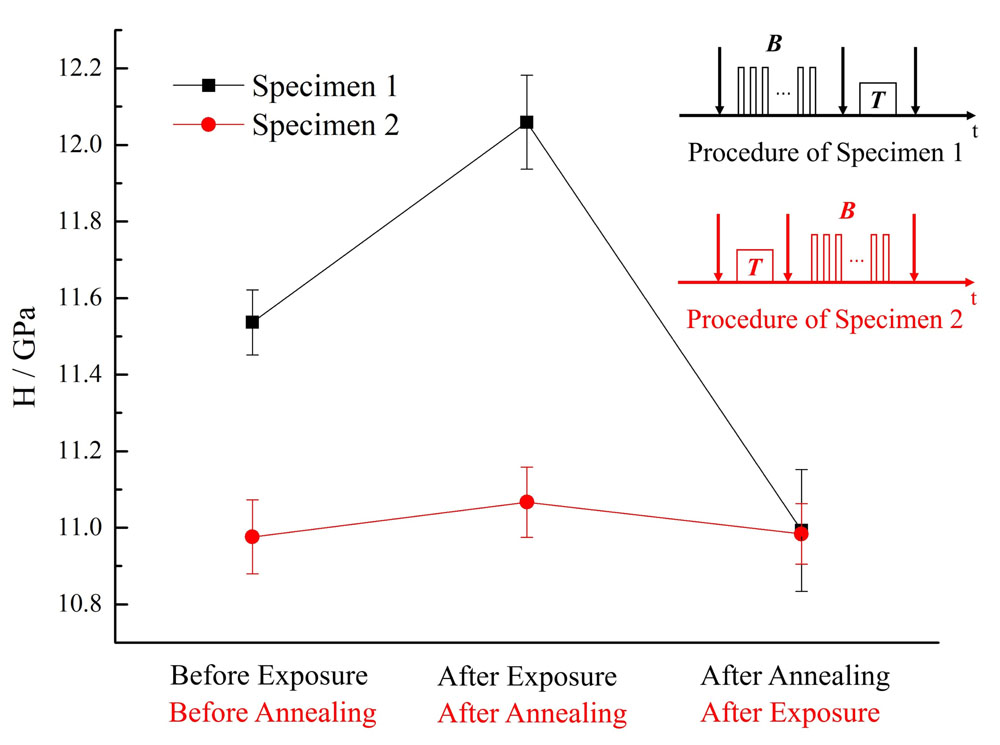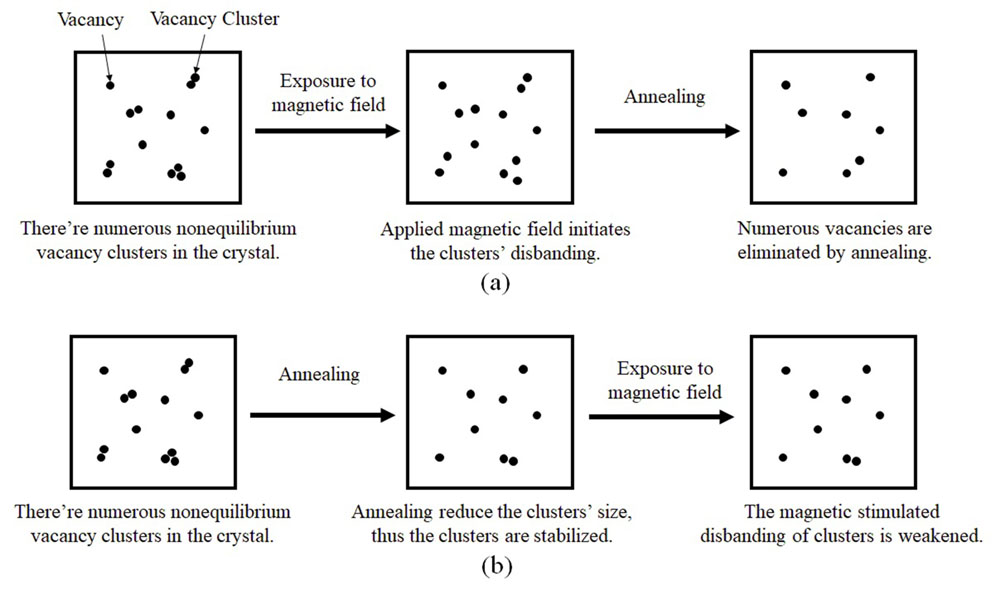The effects of a magnetic field on the plasticity, strength and state of structural defects of materials are called magnetoplastic effects, which can occur in metals, semiconductors, ionic crystals, etc. The magnetoplastic effects include both the simultaneous effects of magnetic field and the residual effects after magnetic field.
Zhipeng Cai’s group studied the effect of a magnetic field on the nanohardness of implanted layer of monocrystalline silicon doped with phosphorus by ion implantation. The results show that the nanohardness of monocrystalline silicon can be significantly increased by the magnetic field, but this lifting can be eliminated by rapid annealing; the rapid annealing has no effect on the nanohardness of the silicon crystals that have not been exposed to a magnetic field, but after rapid annealing, the magnetic field can no longer affect its nanohardness.

Fig.1 The effects of magnetic field and annealing on the nanohardness of monocrystalline silicon. In the procedure diagram: B — exposure to magnetic field, T — rapid annealing, arrow — measurement of nanohardness.
Zhipeng Cai’s group discussed the mechanism of the above phenomena. It’s established that an applied magnetic field can initiate the disbanding of vacancy clusters, which can cause a large number of nonequilibrium vacancies. And in the loading process of nano-indentation, the separated vacancies bind to adjacent dislocations produced by nano-indentation under the attraction of the half-planes of atom, resulting in dislocation climbing. The dislocation segments that have climbed get out of the slip plane, thus they are hard to slip, and as a result the pinning of dislocations is enhanced. The annealing can eliminate the vacancy clusters, thus the subsequent magnetically stimulated vacancy cluster disbanding effect is eliminated.

Fig.2 Changes of the state of vacancy clusters in silicon crystals caused by magnetic treatment and annealing: (a) expose the crystals to magnetic field and then anneal them, (b) anneal the crystals and then expose them to magnetic field.
Zhipeng Cai’s group put forward a possible mechanism of the magnetic stimulated vacancy cluster disbanding effect: the magnetic field can promote the intersystem crossing of the electron pairs (Si-Si bonds) from singlet state into triplet state rifely, and the life of triplet state is much longer than that of singlet state, thus the proportion of the electron pairs in excited state is increased, therefore the bond-breaking efficiency is increased and atoms are easier to migrate. This mechanism is also applicable for other magnetoplastic effects, since the disbanding of vacancy clusters and the depinning and slipping of dislocations are essentially achieved by atom migration (among adjacent sites).
This result is published on the physics journal JETP Letters in July, 2018.
The original link:http://link.springer.com/article/10.1134/S0021364018130040.


